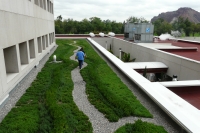Venezuela plans law to ban violent videogames
26 Aug 2009
Source: Reuters
CARACAS, Aug 26 (Reuters) - Venezuelan lawmakers are moving to outlaw the sale of violent videogames and toys in an attempt to fight rampant crime in the country.
A bill to ban sales of violent games passed its first hurdle in the National Assembly on Tuesday evening, the legislative chamber said in a statement issued on Wednesday.
Dozens of people are murdered every week in the capital Caracas, one of Latin America's most dangerous cities, sometimes for as little as a pair of shoes or a mobile phone.
Opponents of President Hugo Chavez say 100,000 people have been murdered since he assumed office in February 1999. The government says its opponents and Venezuela's private media exaggerate the problem.
Police release crime statistics irregularly and officials frequently say they do not know how many homicides have taken place.
To become law, the bill must pass a second vote in the National Assembly and be signed by Chavez. The National Assembly has not set a date for a second vote.
Some countries ban violent videogames and many restrict their sale to children. Although few studies have shown that such games cause aggressive tendencies, they have often been the subject of controversy. (Reporting by Ana Isabel Martinez; Writing by Robert Campbell; Editing by Eric Walsh)
Source: http://www.alertnet.org/thenews/newsdesk/N26262990.htm
26 Aug 2009
Source: Reuters
CARACAS, Aug 26 (Reuters) - Venezuelan lawmakers are moving to outlaw the sale of violent videogames and toys in an attempt to fight rampant crime in the country.
A bill to ban sales of violent games passed its first hurdle in the National Assembly on Tuesday evening, the legislative chamber said in a statement issued on Wednesday.
Dozens of people are murdered every week in the capital Caracas, one of Latin America's most dangerous cities, sometimes for as little as a pair of shoes or a mobile phone.
Opponents of President Hugo Chavez say 100,000 people have been murdered since he assumed office in February 1999. The government says its opponents and Venezuela's private media exaggerate the problem.
Police release crime statistics irregularly and officials frequently say they do not know how many homicides have taken place.
To become law, the bill must pass a second vote in the National Assembly and be signed by Chavez. The National Assembly has not set a date for a second vote.
Some countries ban violent videogames and many restrict their sale to children. Although few studies have shown that such games cause aggressive tendencies, they have often been the subject of controversy. (Reporting by Ana Isabel Martinez; Writing by Robert Campbell; Editing by Eric Walsh)
Source: http://www.alertnet.org/thenews/newsdesk/N26262990.htm




